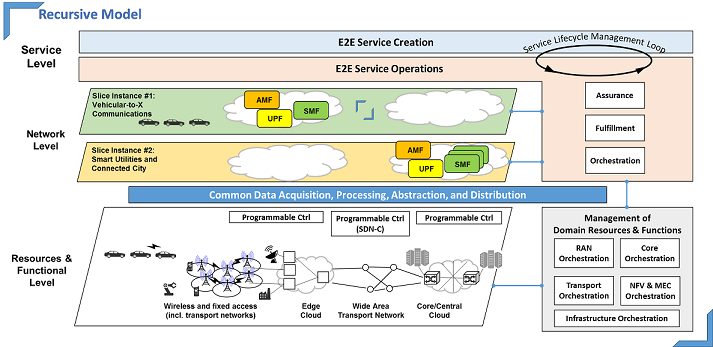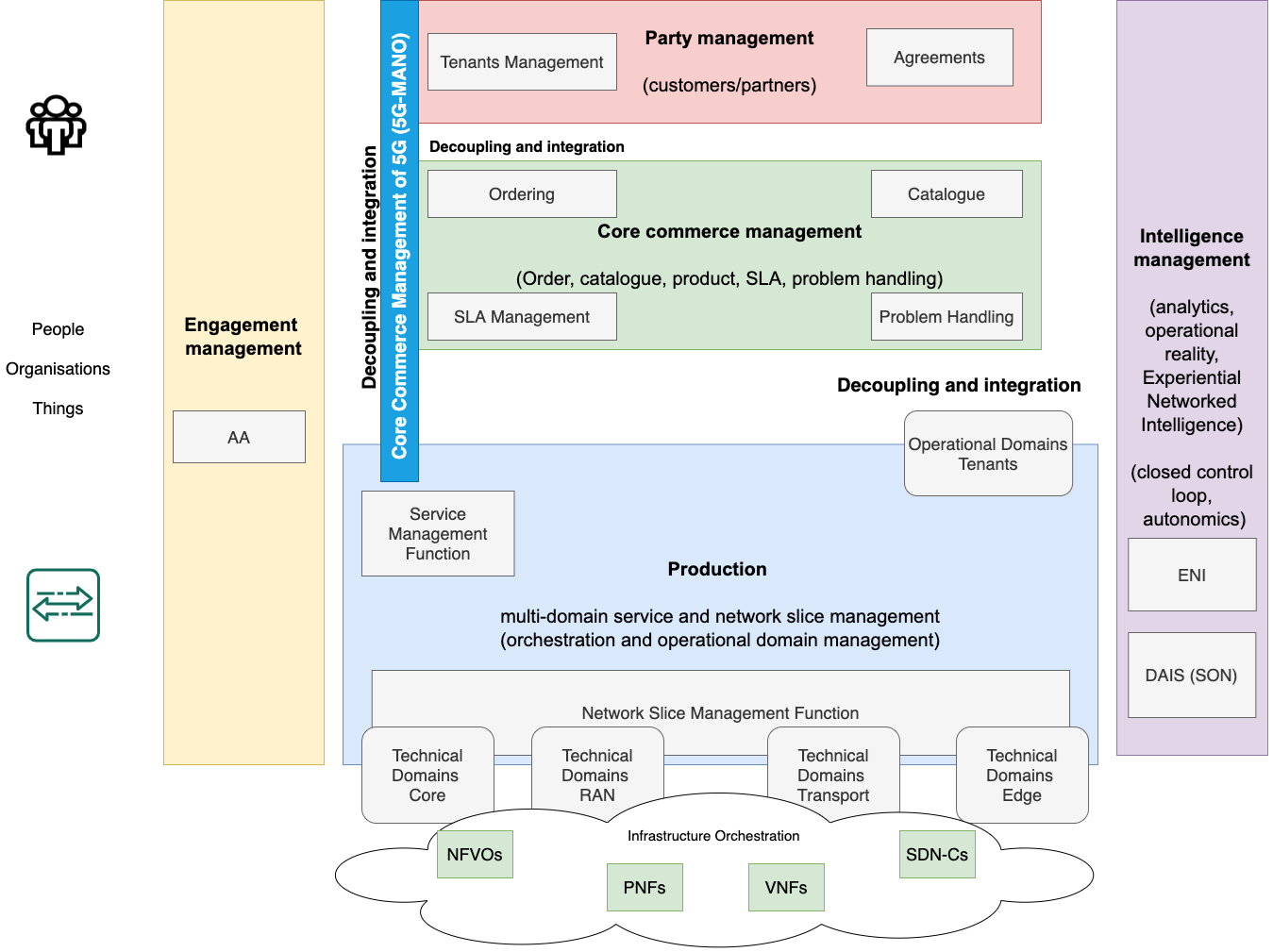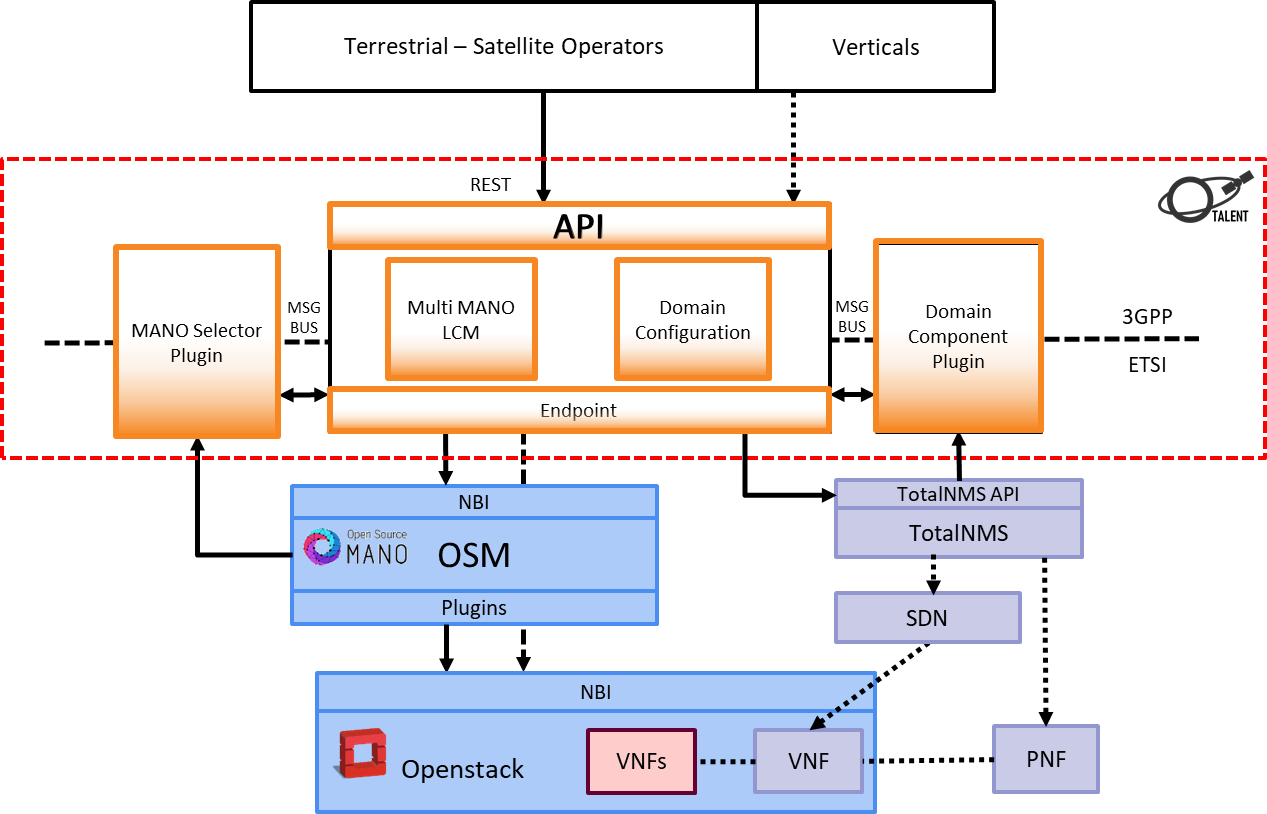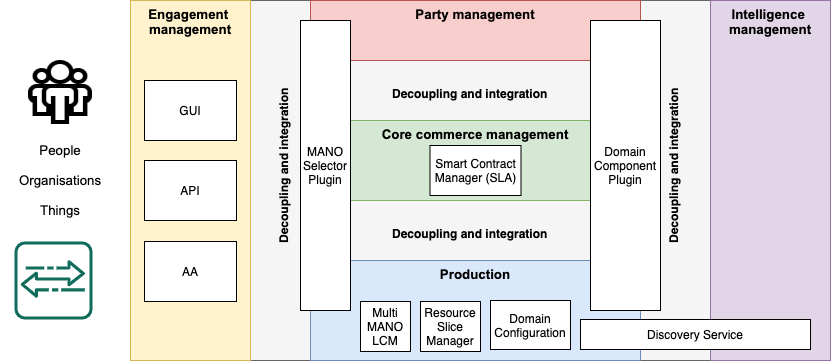NREN Architectures
Analysing NREN architectures from an orchestration, automation and virtualisation (OAV) point of view using a common reference architecture helps align efforts, and find similarities in the way different functionalities and components are implemented, which in turn facilitates potential collaboration between organisations and future interoperability. In pursuit of this goal, the GN4-3 Network Technologies and Services Development Work Package (WP6), Network Services Evolution & Development task (T2) selected the TM Forum Open Digital Architecture (ODA) as a reference blueprint architecture that can be used for such cross-comparison. The rationale for that choice is described in Deliverable D6.6: Transforming Services with Orchestration and Automation and in the White Paper: OAV Architectures.
CYNET
CYNET OAV Architecture Analysis
GÉANT Whitepaper December 9, 2020
(pdf)
This document undertakes an analysis of CYNET’s network architecture components. It does so by comparing the current status to the TM Forum’s Open Digital Architecture (ODA), which is the reference architecture selected by the GN4-3 project’s Orchestration, Automation and Virtualisation (OAV) focus group within the Network Technologies and Services Development Work Package. The analysis can help to further develop the potential for CYNET to be compatible with future OAV multi-domain processes and workflows throughout Europe.
CYNET is Cyprus' National Research and Education Network. It provides a network infrastructure for the Cypriot Research and Education Community and connects educational and research institutions. CYNET-II, the national backbone of CYNET, is connected to the European backbone GÉANT which is part of the world-wide community of research and education networks. Because Cyprus is a small island, CYNET is a National Research and Education Network (NREN) that serves only a few universities (around 17) which has so far allowed its workflows to be mainly non-automated processes. However, although CYNET is currently only at the beginning of its journey into Orchestration, Automation and Virtualisation (OAV), going forward the organisation would like to do more to benefit from adopting OAV principles, and to make sure it is compatible with future OAV multi-domain processes and workflows throughout Europe.
CARNET
CARNET OAV Architecture Analysis
GÉANT Whitepaper June 16, 2021
(pdf)
The document analyses the mapping of the CARNET architecture to the TM Forum’s Open Digital Architecture aiming to provide a standardised view of the components and implementations of orchestration, automation and virtualisation within the NRENs.
HEAnet
HEAnet OAV Architecture Analysis
GÉANT Whitepaper October 20, 2021
(pdf)
The document analyses the mapping of the HEAnet architecture to the TM Forum’s Open Digital Architecture, aiming to provide a standardised view of the components and implementations of orchestration, automation, and virtualisation within the National Research and Education Networks (NRENs).
SURF
SURFnet OAV Architecture Analysis
GÉANT Whitepaper December 9, 2020
(pdf)
This document analyses the mapping of the SURFnet architecture to the TM Forum’s Open Digital Architecture, as part of the GN4-3 project’s ongoing activity in the Network Technologies and Service Development’s work package to provide a standardised view of the components and implementations of orchestration, automation and virtualisation within the NRENs. Overall, it can be concluded that the SURFnet OAV architecture, although independently developed, is very much aligned to the ODA’s core principles and design concepts.
Other Use Cases
5G
5G is a mobile technology that is addressing, by design, a broad range of requirements: very high data rates, very low latency, low energy consumption, high scalability, improved connectivity and reliability, and improved security [FGPPP18], [FGPPP20]. The 5G specifications focus on serving mobile operator needs in terms of extreme mobile broadband services and include several features to support vertical industries in terms of enablers for an industrial Internet of Things (IoT) and Ultra Reliable Low Latency Communications (URLLC) [FGPPP20]. Within the 5G system, end-to-end (E2E) network slicing, service-based architecture, Software-Defined Networking (SDN) and Network Functions Virtualisation (NFV) are seen as the fundamental pillars of the 5G architecture. Read more...
TALENT
Terrestrial Satellite Resource Coordinator (TALENT) is a coordination tool which provides end-to-end services over satellite domain, radio system, cloud and Mobile Edge Computing (MEC) resources [TAL19]. It provides a single and easy-to-use point of interaction for all stakeholders involved in the ecosystem, such as terrestrial and satellite operators as well as different 5G verticals. TALENT is completely in line with 3GPP and ETSI definitions, extending them towards satellite systems. The original idea of TALENT is based on the definition of hierarchical and distributed orchestration [HDO17], where an overarching orchestrator is able to manage and coordinate several independent domains (satellite, radio and cloud). It is assumed that a domain manager (DM) exists in each domain that can work with the resources of this domain. In this sense TALENT becomes a light, scalable and efficient solution, agnostic to elements of domains coming from various vendors. Read more...
References:
[FGPPP18] 5GPPP Architecture Working Group View on 5G Architecture, v2.0, Jan 2018 https://5g-ppp.eu/wp-content/uploads/2018/01/5G-PPP-5G-Architecture-White-Paper-Jan-2018-v2.0.pdf
[FGPPP20] 5GPPP Architecture Working Group View on 5G Architecture, v3.0, Feb 2020 https://5g-ppp.eu/wp-content/uploads/2020/02/5G-PPP-5G-Architecture-White-Paper_final.pdf
[HDO17] J. S. Choi, “Hierarchical Distributed Orchestration Framework for Multi-Domain SDTNs”, Journal of Optical Communication and Networking, vol. 9, no. 12, pp. 1125-1135, 2017 https://www.osapublishing.org/abstract.cfm?uri=jocn-9-12-1125
[TAL19] H. Khalili, P. S. Khodashenas, D. Guija and S. Siddiqui, “Introducing Terrestrial Satellite Resource Orchestration Layer”, 21st International Conference on Transparent Optical Networks (ICTON), 2019, pp. 1–4, doi: 10.1109/ICTON.2019.8840562 https://ieeexplore.ieee.org/abstract/document/8840562/








